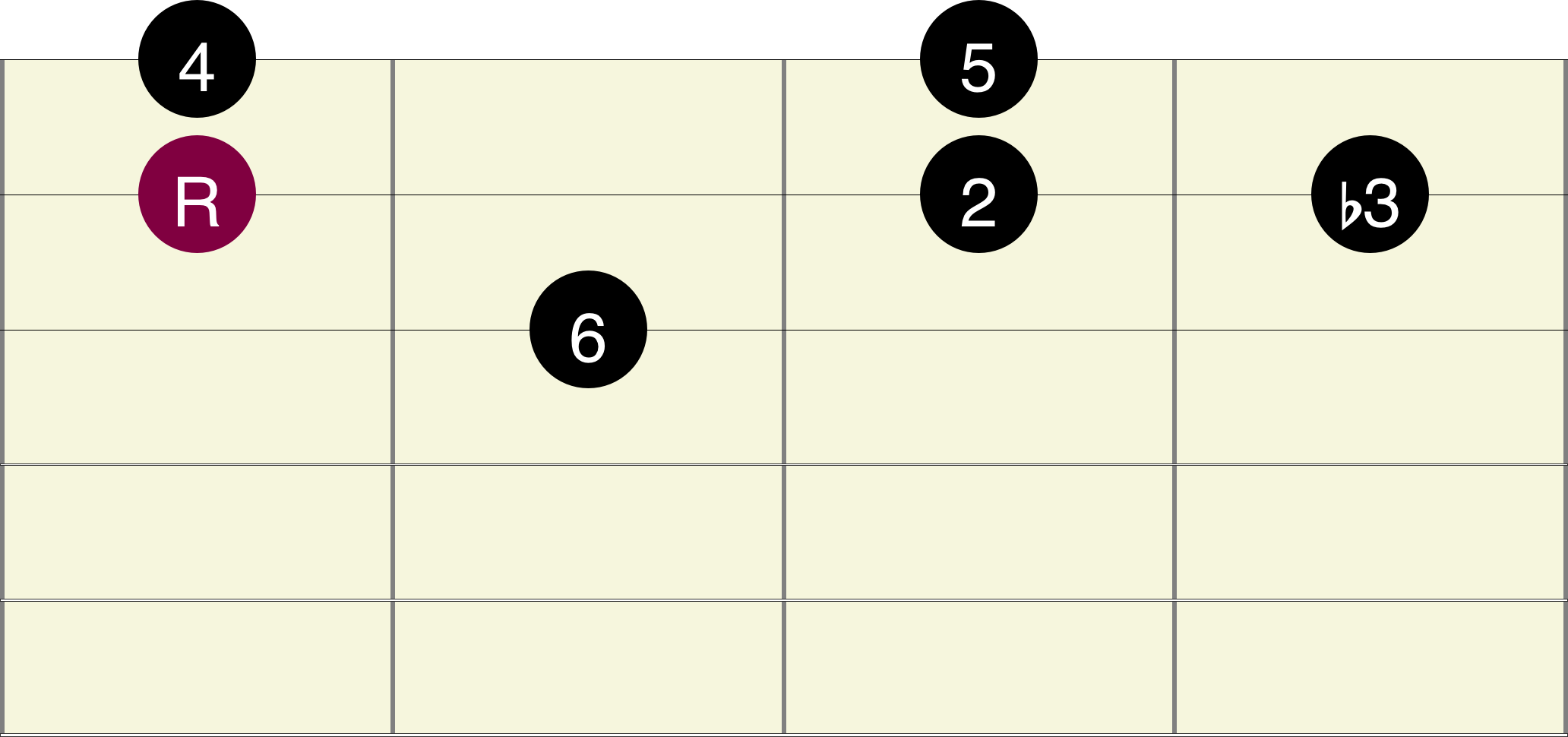Blues Guitar Scales
Having a wide knowledge of blues guitar scales and how to use them can really elevate your skills as a blues guitar improviser. Take a look at the scales listed below to get started, and if you have any questions, please let me know!
Minor Pentatonic Scale
The Minor Pentatonic Scale is a common choice for beginning improvisers who are learning to solo over the blues because the same scale can be used over the I, IV, and V chords. Just because the scale is popular with beginners and at times overused, don't underestimate the power of classic minor pentatonic scale. Everyone from Eric Clapton to Billy Gibbons has relied upon the beautiful simplicity and power of the minor pentatonic scale at one time or another. If you're getting started learning blues guitar scales, this is the one to learn first. The formula for the minor pentatonic is 1 - b3 - 4 - 5- 7.

Blues Scale
The blues scale is exactly the same as the minor pentatonic scale with one "minor" addition, a flatted fifth note (but in addition to the regular fifth note, not as a replacement). So the blues scale has six notes instead of five: 1 - b3 - 4 - b5 - 5 - 7. You can use the scale over the entire I - IV - V progression, but remember to use the b5 as a passing tone, or it will sound funky, and not in a good way.

Dorian Mode
The Dorian Mode is another "key-based" approach to improvising on the blues. The Dorian mode can be seen as a minor pentatonic scale with an added major 6th (the F# note in the common key of A minor) and 9th.

The BB King Box
While technically a subset of the Dorian Mode, the so called "BB King" is really a position-based pattern more than a new scale (it's a Dorian without the 7th). Its name of course comes from the great blues legend, BB King, who used this pattern regularly, along with such greats as Eric Clapton, SRV, Jimmy Page, and Billy Gibbons. King regularly added the b5, so you can consider that part of the "box" as well. It's a small pattern, but an essential blues guitar scale to know.

Arpeggios
When you want to start playing the changes, (i.e. making your note choices outline the chord progression) a great place to start is using arpeggios, playing the chord tones over each chord in the progression. So for example, in a I IV V blues progression in A (A7 - D7 - E7) you would - for example - play the notes A - C# - E - G over the A7 chord. When you switch to the D7 chord, you would play D - F# - A - C, and so forth.
Playing arpeggios instead of scale patterns can be very challenging at first, but there are some common arpeggio patterns that can be easily memorized to help you get started (see below).

Mixolydian Mode
Another option with playing the changes in a blues progression is to use the Mixolydian Mode (the fifth mode of a major scale) over the 7th chord of the same name. In other words, over a I IV V in A, you'd use A Mixolydian (A - B - C# - D - E - F# - G) over A7, D Mixolydian (D - E - F# - G - A - B - C) over D7, and E Mixolydian (E - F# - G# - A - B - C# - D) over E7. By the way, if you already know your major scales, it's worth noting that the Mixolydian Mode differs from the Major Scale by only one note (a flatted 7th).

Major Pentatonic
Finally, another common way to play the changes over a standard blues progression is to use the Major Pentatonic scale. Unlike the Minor Pentatonic Scale (which is key centered), the Major Pentatonic scale must be tailored to the chord (like the Mixolydian Mode above). So in our sample key of A, you'd use A Major Pentatonic (A - B - C# - E - F#) over A7, D Major Pentatonic (D - E - F# - A - B) over D7, and E Major Pentatonic (E - F# - G# - B - C#).

Blues Guitar Scales - Some Advice
Trying to learn all of the above patterns can seem intimidating to the beginning improviser. Try taking them one at a time. Start with the minor pentatonic, then add the minor blues scale. Add the others after mastering these two so you've got a good foundation.
Add Your Comments Here!
I'd love for you to be a contributor to SoMuchGuitar.com!
Just fill out the information below to add to this page. I'll be in touch about your submission soon!